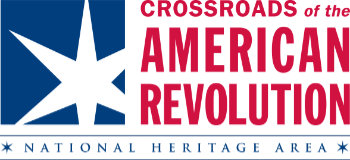Biography People
John Brown Full Biography
I was born May 15, 1761 to Henry and Sarah Brown in Gloucester County, New Jersey. About the age of 14, I was apprenticed to a local house carpenter to learn his trade, but the War of Independence cut short my apprenticeship when I was not quite 16 years old. I enlisted on January 1, 1777, for the duration of the war, in Captain Samuel Hugg’s West Jersey Artillery Company. This company became part of Colonel John Lamb’s Second Regiment of Continental Artillery in 1777.
In April 1777, Captain Lieutenant Joseph Datton commanded the company, and I was a bombardier, a specialized job dealing with the mortars that fired high flying, exploding shells. On June 1, I was appointed a corporal. Captain Datton resigned in July 1777 and Captain Thomas Randall took command in September. My company took part in the fighting around Philadelphia and fought at Brandywine on September 11, 1777. We were with General Anthony Wayne’s troops at Paoli on September 21 with our four light cannons and 37 men. During the battle one of our cannons broke down, blocking a road, but was taken up and carried off the field by another American unit forming a rear guard. Captain Randall was taken prisoner while we were moving our cannons. He tried to escape, but was knocked down by enemy soldiers and stabbed with bayonets eight times. He was just one of many men bayonetted by the British that day in what became known as the Paoli Massacre. Severely wounded, he could not be carried away by the enemy, so they left him at a house and put him on parole, meaning he swore not to return to the army unless exchanged for a British prisoner. He was exchanged in December 1777. Next we were at the Battle of Germantown in October and then the Battle of Fort Mifflin on November 10.
In November and December 1777, I was sick in the hospital and then was recuperating on furlough in January and February 1778. Our company spent that winter of 1778 at Valley Forge. In the spring we were attached to General Maxwell of the New Jersey troops and fought under him at the Battle of Monmouth in June, when once again our commander was wounded, this time Captain Lieutenant Seth Bowen. He resigned on October 7. On November 20, 1778, I was reduced in rank to matross, essentially a private. After Monmouth we went to Elizabethtown and stayed there in winter quarters. On February 25 the British attacked Elizabethtown and fire from our cannons helped force them to retreat, leaving two of their men killed on the field. In the spring of 1779 we went to Eastown, Pennsylvania with some cannon captured from the British at Saratoga and remained there until General Sullivan returned from his expedition against the Iroquois Indians in New York.
We then spent the terrible winter of 1780 at Morristown under the command of Captain Isaiah Wool. Part of that time I spent on command at an alarm post. Being on command meant that I was temporarily detached from my company to reinforce another post. In August and September 1780 we were at Dobbs Ferry, New York and then Orange, New Jersey. Captain Wool resigned August 21, 1780 and our new captain, Thomas Theodore Bliss, became a prisoner of war, but was exchanged on January 9, 1781. He did not rejoin our regiment because he was apparently sick and stayed in Boston, where he had a tavern.
We marched south with the Continental Army to Virginia in 1781 and defeated General Cornwallis at Yorktown in October. In February 1782 we were stationed at the military barracks at Burlington, New Jersey and from July to December 1782, when my company was at West Point, I was on command at the Mount Hope Furnace in Morris County, New Jersey where iron used by the army was made.
I was discharged at West Point when the army was disbanded in May 1783. I sold my land warrant entitling me to free land in the west, part of my bonus for enlisting for the duration of the war, for a fraction of its value, because I had no real use for it and needed immediate money, since we didn’t get paid.
When I returned to Newton Township in Gloucester County (now West Collingswood, Camden County), I married Anne Thackary. I was just 22 years old and Anne was twenty. Our first child, Deborah Brown, was born on August 23, 1784. We had four children, but two died before the age of two. Anne died in March 1792 and I married Elizabeth Sims the following November. We had five children, but again two died very young. Elizabeth died in 1807 and I married my third wife, Hannah, in 1810. In later life, I served as a Methodist circuit rider and died on January 2, 1827 in Deptford, New Jersey at age 65.
FURTHER SOURCES
Cushing, Thomas and Charles E. Sheppard. Histories of the Counties of Gloucester, Salem, and Cumberland, New Jersey. Philadelphia: Everts & Peck, 1883.
Stewart, Frank H. Notes on Old Gloucester County, New Jersey. New Jersey Society of Pennsylvania, 1917.
Gloucester County records available at the New Jersey State Archives
National Archives and Records Administration Muster and Payroll Records – NARA M2246
